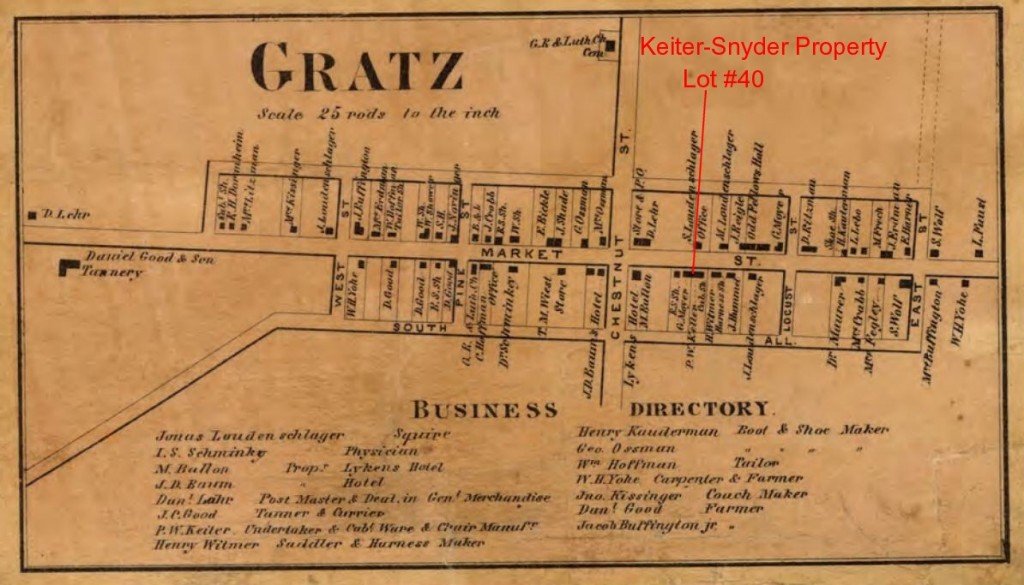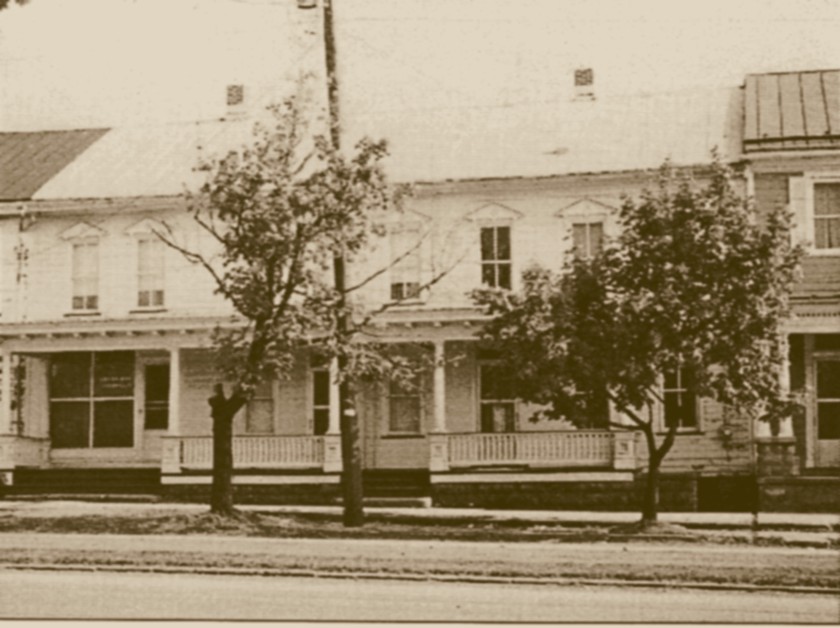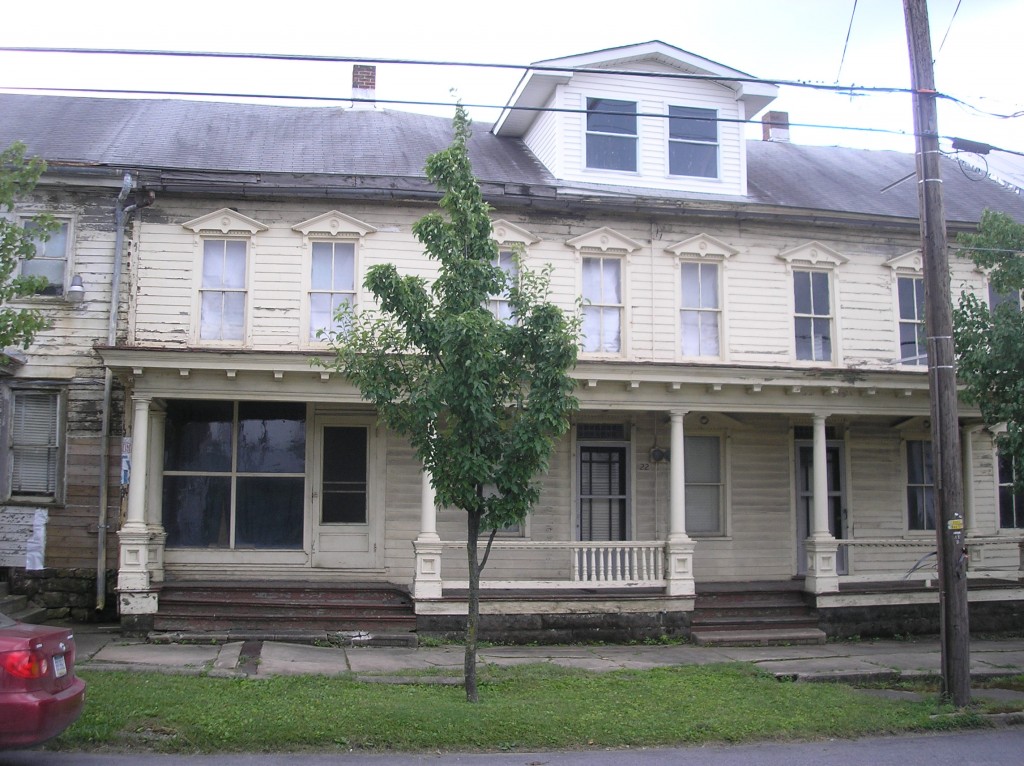Gratz During the Civil War – Keiter-Snyder Property
Posted By Norman Gasbarro on September 21, 2012
The row of houses on the south side of Market Street in the first block east of Centre Street (formerly Chestnut Street) now appears as abandoned and partially boarded-up. During the Civil War, this was the property of two Gratz businessmen, Philip W. Keiter and Cyrus Snyder. The original buildings were built some time before 1827.
The earliest available picture is from the 2nd half of the 20th century and is shown below.
Known as Lot #40 of the original Simon Gratz land subdivision, the second owner was Jacob Hoffman Jr. (1782-1862), a grandson of Johann Peter Hoffman (1709-1798), pioneer settler of the Lykens Valley. He purchased it from Jacob Wiest and his wife Mary Wiest in 1821. Many of Jacob Hoffman Jr.‘s grandsons were Civil War veterans including five of the sons of Amos Hoffman (1809-1899). One of Amos’ sons, Thomas William Hoffman, was the recipient of the Medal of Honor for gallantry at the Siege of Petersburg.
In 1827, Jacob Hoffman Jr. sold the property to Philip Keiser (1800-1839), a tailor. Keiser also had many grandchildren who were Civil War veterans, including Henry Keiser (1840-1933), who kept a diary during the war. Portions of that diary have been previously featured on this blog.
Philip Keiser only kept this property until 1834, when he sold it to John Bressler (1809-1886) who was also a tailor but was working as a millwright. Bressler had been a tenant on the property, perhaps as early as 1830. But he only kept the property until 1839, when it was sold to another member of the Hoffman family, Jacob P. Hoffman (1812-1874), a tailor. Following this purchase, the lot was subdivided into two sections, one of which was sold to Philip W. Keiter, a carpenter. Keiter is named on the “business directory” at the bottom of the 1862 map of Gratz as an “undertaker, cabinet ware and chair manufacturer.” Prior to the Civil War, he was a member of the Gratztown Militia, and when called into service by the Governor for the Emergency of 1863, became a member of the 36th Pennsylvania Infantry Militia, Company C.
In 1863, the Keiter’s sold the western part of the lot to Cyrus K. Snyder. For the remainder of the war, Snyder owned it but after the war sold it to Amanda [Kissinger] Riegle (1831-1897) the wife of Civil War veteran Josiah R. Riegle (1829-1886). This part of the property had deteriorated significantly and after Josiah died, Amanda had difficulty maintaining it. She took in sewing to try make ends meet, but in 1888 sold to James F. Hoffman who had purchased the eastern part of the lot in the same year.
The eastern part of the lot was sold by Philip W. Keiter in 1870 to Daniel Klinger, a cabinet maker, who made significant improvements and maintained the property until 1881 when he sold it to William McNoldy. McNoldy was a hostler and during the Civil War was probably working at the Lykens Hotel on the southeast corner of Chestnut and Market Streets (see 1862 map above). By 1881, William McNoldy was working as an undertaker and cabinet maker from this property. Because corpses were placed in the house here, old-timers in Gratz have related ghost stories that have been passed down through their families. One of those stories appears in the book, A Comprehensive History of the Town of Gratz Pennsylvania. During the smallpox epidemic of 1882, some of the pallbearers and those who officiated at the funeral of Edmund Umholtz (a Civil War veteran) contracted the disease, believed to have been spread from this house.
William McNoldy sold to James F. Hoffman in 1888 and the property reverted back to a single lot. Then in 1890, it was sold to Howard H. Romberger who had been a minister from 1881 to 1890, but decided to become a merchant. He made extensive repairs to the buildings, including the conversion of one part into a dry goods store and the addition of a steam heating system, the first central heating of this type in Gratz.
This is part 41 of an ongoing series on Gratz during the Civil War. Some of the information for this post was taken from the book A Comprehensive History of the Town of Gratz Pennsylvania.
Other parts of the series on Gratz During the Civil War can be found on this blog by clicking on “Walking Tour.”
 ;
;





Comments